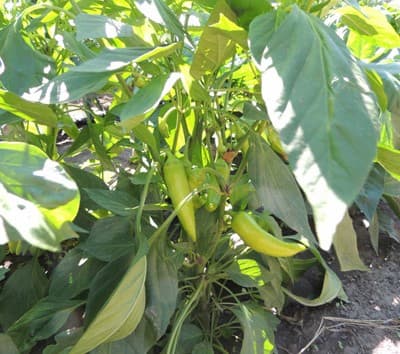How to Grow Banana Pepper Plants

About Banana Pepper Plants
Banana peppers are a very tasty treat. And, they are easy to grow. Banana pepper plants are prolific producers of sweet, yellow fruit. The fruit grows six to seven inches long and1 1/2 inches wide. The fruit is a pale yellow, ripening to a bright red. If you grow just two or three plants, you will find yourself giving them away to thankful family and friends. The plant produces up to the first frost.
Enjoy banana peppers in a wide variety of recipes. They are great raw or cooked. Use them in salads, on the grill, in a vegetable medley, in a stir-fry, stuffed, or on the snack tray. They can be used in just about any recipe that calls for sweet peppers.
The attractive fruit grows amidst thick, dark green foliage. Try growing them as an ornamental plant on your balcony or deck.
Sowing Sweet Banana Pepper Seeds
Banana pepper plants are best started indoors, six to eight weeks or more before the last frost date for your area. Slow starters, germination takes 2 – 3 three weeks. Seedlings grow slowly at first.
Sow seeds 1/4″ deep, and cover with light, seed starting soil.
Tip: We strongly recommend the use of a heated germination mat, to reduce germination time, and increase germination rate.
Days to Maturity: 70 to 90 days.
Transplant seedlings after the last frost date in your area. If the weather is still cool, delay transplanting a few days, to avoid stunting the plants. Keep the plants in a cold frame, indoors or next to the house.
How to Grow Banana Pepper Plants
Grow Sweet Banana Pepper plants in full sun, and rich, well-draining garden soil. Before transplanting outdoors, add plenty of compost, manure, and a general-purpose fertilizer.
The plants like the weather hot.
Space 18-24 inches apart, in rows 24 to 36 inches apart.
Banana Pepper plants prefer moist soil. Add plenty of water during hot, dry summer months.
Mulch around the pepper plants to keep down weeds, and to retain soil moisture.
As the peppers develop, switch over to a fertilizer higher in Phosphorous and Potassium. A high nitrogen fertilizer can result in a great-looking bushy, green plant, with few fruits.
Peppers are self-pollinating. They can cross-pollinate with pollen carried by bees or other insects. If you are going to save the seeds for next year, do not plant different varieties near each other.
Also, See:
Banana Pepper Plant - Insects and Plant Disease
Many insects are harmful to pepper plants. Spider mites and aphids are the most common, with an occasional borer. Pest problems are usually infrequent. For the infrequent problem, try an organic insecticide or dust.
Deer will eat the plant leaves.
Plant Problems – Diagnosis, causes, and cures for many common plant problems.
Disease problems are infrequent, most often occurring in hot, humid weather.
Fungal infections can be treated with fungicides. Apply treatment as needed.
Harvesting Peppers
Pick peppers as soon as they reach an edible size. Or wait until they ripen to a bright red color.
Pick banana peppers regularly, before they get too big. Continuous harvesting promotes a new fruit set, and you will be harvesting them to the first frost.
Plant Hardiness
Banana peppers are a warm-weather crop. Spring and fall frosts will kill the plant. Cold weather in the 30s can stunt their growth. In the event that frost is expected, cover the plants.
Pepper Recipes
Pepper Links
Do you know your Peppers? Check out the common varieties of peppers.
Please support our site. Shop for:
- rmmatthews100@hotmail.com
- 585-721-6528
- Rochester, NY
©1999-2024 GardenersNet.Com, All Rights Reserved

